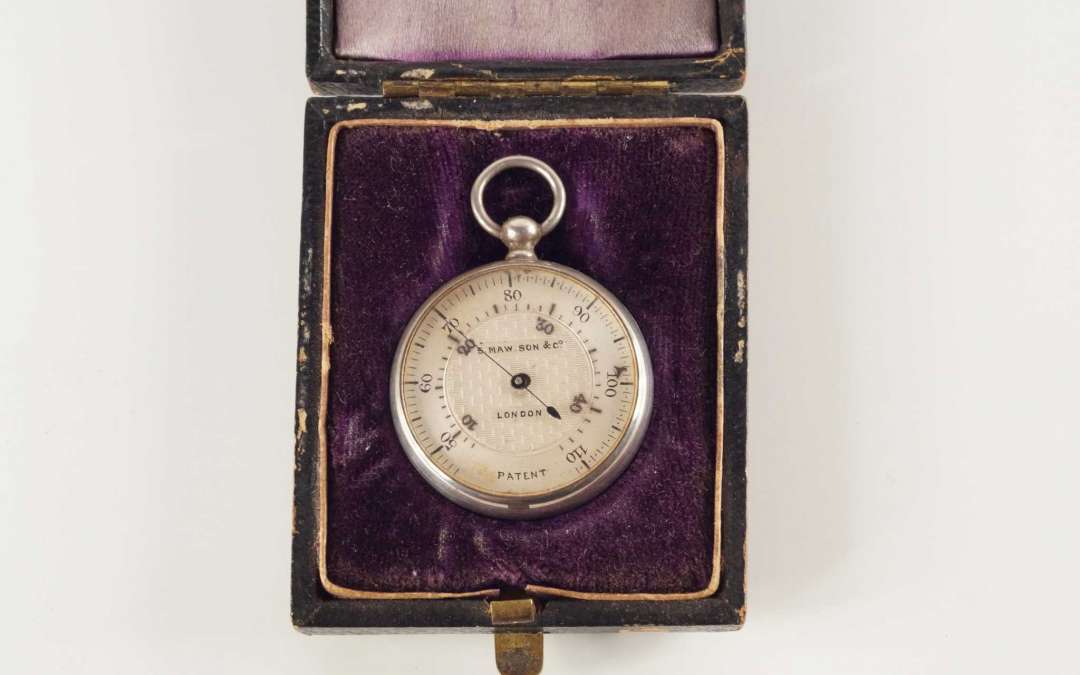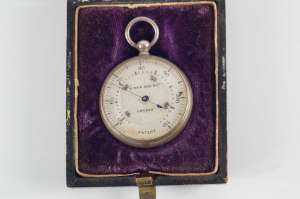Moritz Immisch, born in Germany, was the eldest son of August Christian Immisch, a watchmaker. After completing university, he and his younger brother migrated to England in the early 1860s and settled in London. In 1876, Moritz married an English woman and became a naturalised British citizen in 1896.
Initially, Immisch gained recognition among leading watch and clock manufacturers. In 1872, he submitted an essay titled “The Balance Spring” on the balance spring and its isochronal adjustments. He was awarded the British Horological Institute’s Baroness Burdett Coutts Prize, and his essay was published as a book.
In 1881, Immisch received a patent for a small watch-shaped thermometer that relied on the variable expansion properties of fluid in a Bourdon tube. This metallic instrument was designed to be more durable than contemporary glass thermometers filled with mercury. The watch dial indicator allowed for accurate readings due to the quick temperature expansion and calibration, and its small size made it highly portable as a clinical instrument.
Each year after its launch, hundreds of Immisch thermometers were tested for accuracy at the Kew Observatory. The thermometer was awarded a Silver Medal at the International Medical Congress of 1881 and received recognition at the Inventions Exhibition of 1885 in London, the Exposition Universelle in Antwerp, and the Gewerbe und Industrie Ausstellung in Görlitz, also in 1885.
Immisch’s interest in the science of electricity and magnetism led him to design and construct electric motors. By 1880, his experiments with small dynamo-electric machines led him to step away from watch-making and explore new opportunities in the emerging electrical engineering industry. Although Moritz Immisch is primarily remembered for his contributions to the motor and early development of electric power, records from European and American patent offices reveal his prolific inventiveness. Between 1818 and 1890, he filed over forty patents.


